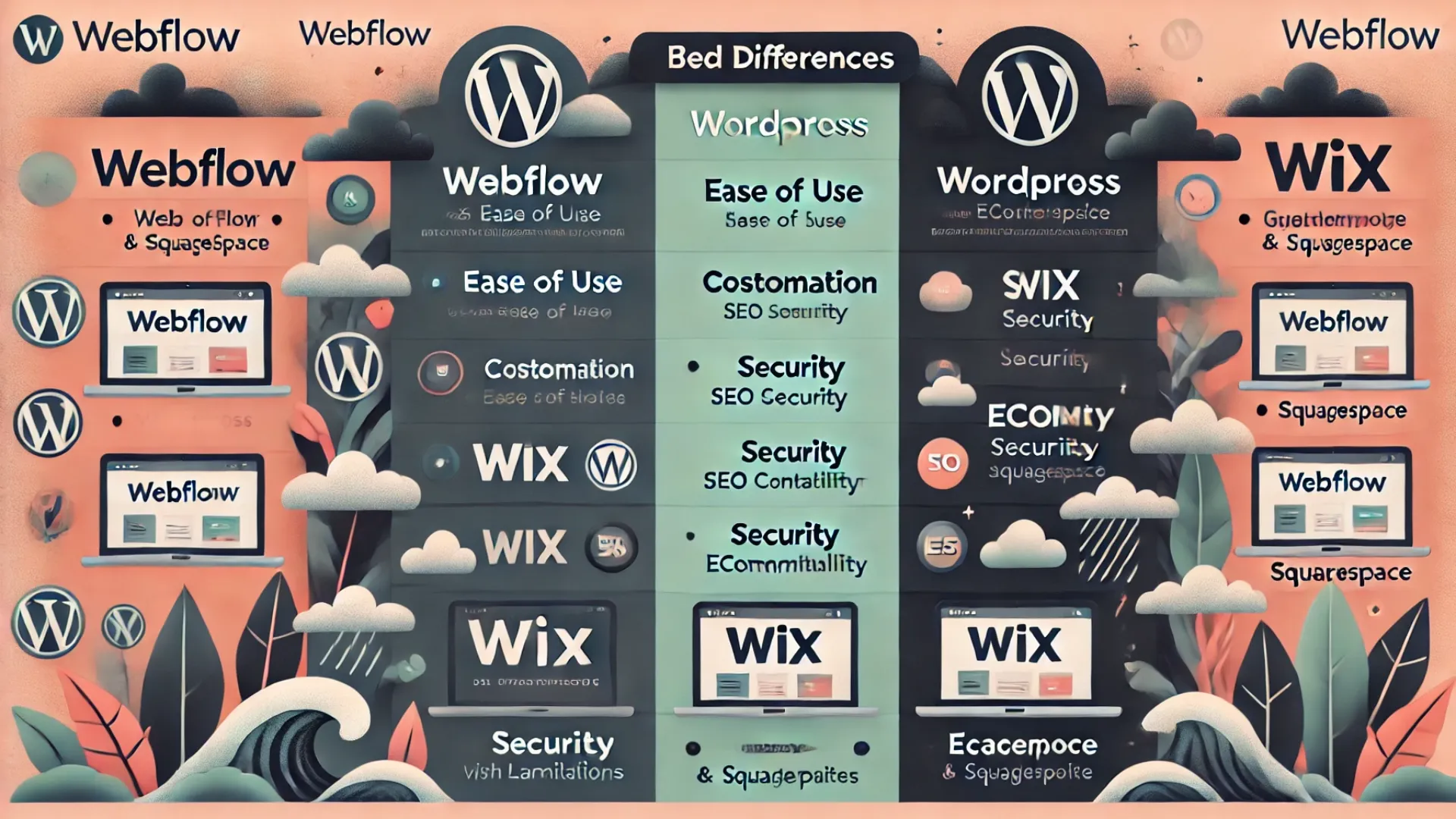Webflow: The All-in-One Design and Development Powerhouse

What is Webflow?
Webflow is a visual development platform that combines the power of a design tool with a robust content management system (CMS) and hosting infrastructure. It allows users to design the visual interface of their website directly in a browser-based environment, and Webflow automatically generates the clean, semantic code (HTML, CSS, and JavaScript) in the background. This eliminates the need for manual coding, making web development accessible to designers, marketers, and entrepreneurs who may not have coding expertise.

Key Features and Benefits:
- Visual Development: Design and build your website visually, using a drag-and-drop interface and intuitive controls. No coding required!
- Clean Code Generation: Webflow generates clean, well-structured code automatically, ensuring optimal performance and SEO.
- Powerful CMS: Manage your website content with a flexible and user-friendly CMS. Create dynamic content, manage blog posts, and build complex database-driven websites.
- Integrated Hosting: Webflow offers fast and reliable hosting, taking care of server management and performance optimization.
- SEO Optimization: Webflow provides built-in SEO tools to help you optimize your website for search engines. Customize meta descriptions, create sitemaps, and manage redirects with ease.
- E-commerce Functionality: Build and manage your online store with Webflow's e-commerce features. Sell products, process payments, and manage inventory all within the platform.
- Interactions and Animations: Create engaging and interactive experiences with Webflow's powerful animation and interaction tools. Add subtle animations, create complex transitions, and build micro-interactions without coding.
- Collaboration: Webflow allows for real-time collaboration, making it easy for teams to work together on website projects.
- Version Control: Track changes to your website design and code with Webflow's built-in version control system.

Who is Webflow For?
Webflow caters to a wide range of users, including:
- Designers: Webflow empowers designers to bring their creative visions to life without being limited by their coding skills.
- Entrepreneurs: Build and manage your business website quickly and easily with Webflow's intuitive interface and powerful features.
- Marketers: Create landing pages, marketing websites, and manage content with Webflow's user-friendly CMS.
- Developers: While Webflow reduces the need for manual coding, it also provides a robust platform for developers to build complex web applications. They can export the clean code and further customize it.
- Agencies: Webflow is a great platform for agencies to build and manage websites for their clients.

Webflow vs. Other Website Builders:
Webflow vs. WordPress:
- Ease of Use: Webflow is generally easier to use for design-focused users, as it doesn't require coding knowledge. WordPress, while offering a visual editor, often requires coding for advanced customization.
- Flexibility: Both platforms offer great flexibility. Webflow excels in design flexibility, while WordPress offers more flexibility in terms of plugins and extensions.
- Cost: Webflow is a subscription-based platform, while WordPress is open-source but requires separate hosting and potentially paid plugins.
Webflow vs. Wix/Squarespace:
- Design Control: Webflow offers significantly more design control compared to Wix and Squarespace, which are primarily template-based.
- Customization: Webflow allows for greater customization and flexibility compared to Wix and Squarespace.
- Scalability: Webflow is better suited for scaling businesses compared to Wix and Squarespace, which may have limitations for large-scale projects.

Webflow Pricing:
Webflow offers a variety of pricing plans to suit different needs and budgets. Plans are typically tiered based on factors like the number of websites, traffic volume, and e-commerce features.

Getting Started with Webflow:
Webflow offers extensive learning resources, including Webflow University, which provides free video courses and tutorials.

Best Practices for Webflow Development:
- Plan Your Design: Before starting your Webflow project, it's essential to plan your website design thoroughly. Create wireframes, mockups, and style guides to guide your development process.
- Use Components: Webflow's component feature allows you to create reusable design elements, which can save you time and effort in the long run.
- Optimize for Performance: Optimize your website for speed and performance by compressing images, minimizing code, and leveraging Webflow's hosting infrastructure.
- Responsive Design: Ensure your website is responsive and looks great on all devices by using Webflow's responsive design tools.
- SEO Best Practices: Follow SEO best practices to optimize your website for search engines.
The Future of Webflow:
Webflow continues to evolve, adding new features and improving its platform. Its commitment to empowering designers and developers makes it a key player in the future of web development. As no-code and visual development platforms become increasingly popular, Webflow is well-positioned to lead the way.

Conclusion:
Webflow is a powerful and versatile platform that has revolutionized the way websites are designed and built. Its visual development approach, combined with its robust features and integrated hosting, makes it an ideal solution for designers, entrepreneurs, marketers, and developers alike. Whether you're building a simple landing page or a complex web application, Webflow offers the tools and resources you need to bring your vision to life.



